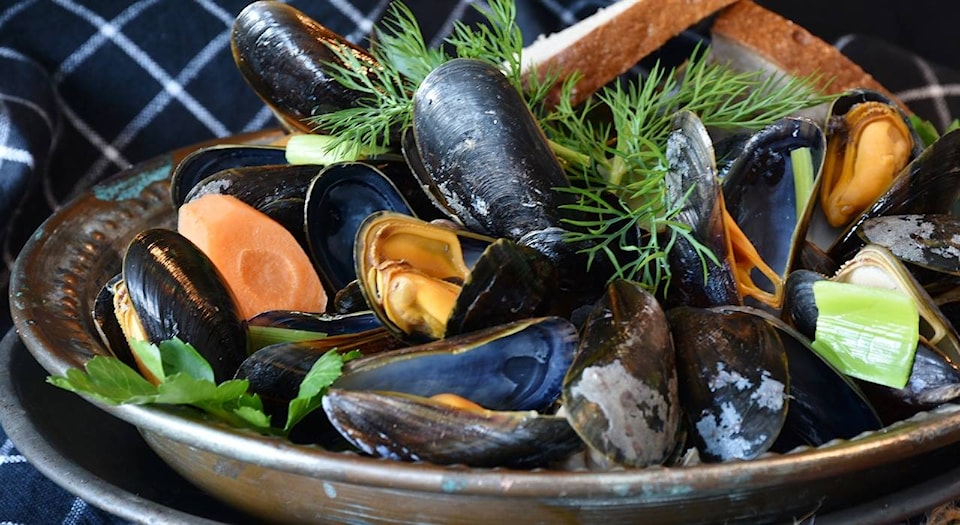The final entry of a three-part series on shellfish, this article will focus on mollusks.
Basically, seafood can be broken down into three main categories: fish, crustaceans, and mollusks.
Mollusks are then divided further into three groups: bivalves, gastropods, and cephalopods. Bivalves have two sides of a shell that are connected by a hinged ligament, like clams, scallops, oysters, and mussels. Gastropods are contained in a single shell, like abalone or snails. Cephalopods have no external shell but have internal cartilage or a bone, like octopus or squid.
Clams, oysters and mussels are the most popular and usually purchased fresh and alive, rather than frozen. At your local market they are kept in open tanks of circulating water for one to choose from. The circulating water helps to purge them of any sand or grit they may contain.
Once purchased, keep them moist and tightly wrapped in your refrigerator. Clams and mussels are most commonly cooked live with their shell intact, while oysters are usually shucked first and then prepared with or without their half-shell.
This being said, clams and mussels are the easiest to prepare. Just prior to cooking, rinse them under cold water, and with mussels remove any foreign stringy matter – this process is called “de-bearding.” If any appear to be open, a couple of light taps on the shell should cause it to close. If this does not happen after repeated attempts, they could possibly be dead and should not be used. Comparatively, once cooked, any that do not open should be discarded for the same reason.
The cooking process is quite simple. All one requires is a contained steaming environment for approximately three to five minutes. Once cooked, their hinged shells will open exposing the inner flesh, thus being your signal that they are done and should be served immediately at this point.
This contained environment can be as simple as a steamer over boiling water, or for more flavour immerse the mussels in a boiling sauce or broth covered with a tightly fitting lid.
When serving, do not remove the clams and mussels from their shells. The shells add a tremendous visual aspect to the dish being served, and prolong the dining experience by having your guests do the extracting as they consume the dish. This makes for a more “hands on” effect and is what makes the meal enjoyably different and tactile.
Abalone are quite rare in most of Canada, and snails (escargot) are usually only available processed in cans. Escargot are often prepared simply by broiling them in garlic butter and served with chunks of bread for dipping.
From the cephalopod grouping, squid (calamari) is more popular than octopus. Although both can be quite tough, octopus are usually more so. Squid are prepared for cooking by cutting and discarding the head, beak, and internal plastic-like bone. The tentacles and hollow body are then rinsed, with the body most commonly cut into rings. Sometimes the hollow body is left whole, and then stuffed and grilled or baked.
Chef Dez is a Chef, Writer, & Host. Visit him at www.chefdez.com
Dear Chef Dez:
I have tried calamari at many restaurants. Some are very tough and chewy, while at other restaurants they are very tender. Do you have any secrets for achieving this?
Wendy M.
Burnaby, BC
Dear Wendy,
The rule of thumb that I have been taught is to cook squid (calamari) for either 45 seconds or 45 minutes, but nothing in between. They are very tender at first, but then toughen up quite quickly and if that 45 second mark in cooking is passed, then they will need a longer cooking time to become tender once again. This being said, calamari is usually deep fried, and I am definitely not recommending that you deep fry them for 45 minutes if you go past 45 seconds. Choosing the time to cook squid should also reflect the cooking method. High heat deep frying or sautéing is fine for 45 seconds, but a moister, lower heat cooking method, like braising, is better for 45 minutes of cooking.
